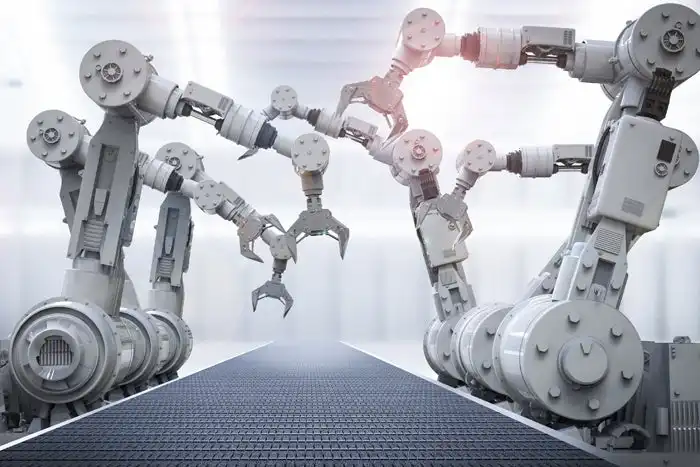The specter of automation has haunted the working class for decades. From the textile mills of the Industrial Revolution to the self-driving cars of today, technological advancements have constantly reshaped the landscape of employment. Yet, the current wave of automation, fueled by artificial intelligence and robotics, feels different. Its potential impact on jobs is vast and multifaceted, prompting a crucial question: is automation a harbinger of mass unemployment or a catalyst for a transformed yet prosperous future of work?
On the surface, the threat of automation appears undeniable. Repetitive tasks, once the domain of human labor, are increasingly being automated. Manufacturing robots are assembling products with greater efficiency and precision. Algorithms are analyzing legal documents, performing financial transactions, and even writing basic news articles. These developments suggest a future where a significant portion of the workforce becomes obsolete.
However, a closer look reveals a more nuanced picture. Historical data shows that automation has not led to long-term job losses. While some jobs disappear, new ones emerge, often requiring different skillsets. The Industrial Revolution, for instance, displaced agricultural workers but created opportunities in factories. Similarly, automation today may eliminate certain manual jobs but generate demand for workers in areas like AI development, data science, and cybersecurity.
This optimistic view hinges on the ability of the workforce to adapt and acquire new skills. Educational systems need significant reforms to equip students with the critical thinking, problem-solving, and technological literacy necessary to thrive in an automated economy. Lifelong learning programs for displaced workers will be crucial to bridge the skill gap and ensure a smooth transition into new job markets.
Beyond job displacement, automation raises concerns about income inequality. While some professions reap the benefits of automation through increased productivity and wages, others are left behind. The tasks most susceptible to automation are often those held by low-wage workers. This widening income disparity could exacerbate social unrest and hinder economic growth.
To mitigate this risk, policymakers need to address the issue of income inequality head-on. Progressive taxation, universal basic income, and targeted social safety nets can help cushion the blow of automation on low-income workers. Additionally, fostering a culture of entrepreneurship and innovation can create new opportunities for wealth creation beyond traditional employment models.
The impact of automation extends beyond the individual to the very fabric of society. As automation disrupts traditional work structures, it raises questions about the definition of work itself. With machines taking over many tasks, what will constitute a meaningful job in the future? How will societies cope with the potential for increased leisure time resulting from increased automation? These existential questions demand a reevaluation of our relationship with work and a focus on activities that promote human well-being and societal progress.
One potential benefit of automation is the liberation of human potential from the drudgery of repetitive tasks. Freed from the constraints of manual labor, individuals can pursue creative endeavors, contribute to social causes, and engage in lifelong learning. Automation could usher in an era of increased leisure time, allowing people to focus on personal development, family, and community involvement.
However, this utopian vision hinges on a fair and equitable distribution of the benefits of automation. A society where a select few enjoy the fruits of automation while the majority are left with unemployment or stagnant wages is a recipe for social unrest. Governments and businesses must work together to ensure that the benefits of automation are shared broadly, fostering an inclusive and prosperous future for all.
The Great Automation Shift presents a complex challenge, fraught with both risks and opportunities. By investing in education, promoting social safety nets, and fostering innovation, we can navigate this transition and build a future where automation serves as a tool for human progress, not a threat to our livelihood.
This is not just an economic issue; it’s a human one. As we embrace automation, we must keep the human element at the forefront. Technology should augment our capabilities, not replace our humanity. The future of work lies not in fearing the machines, but in harnessing their power to create a world where work is fulfilling, purposeful, and accessible to all.
Navigating the Great Automation Shift: A Call to Action
The previous section explored the broad strokes of the Great Automation Shift. But navigating this complex transition requires a deeper dive into specific areas of action. Here’s a breakdown of key areas where policymakers, businesses, and individuals can play a crucial role:
1. Education and Reskilling:
2. Policy and Regulation:
3. Business Innovation and Investment:
4. The Individual and the Future of Work:
Beyond these specific actions, the Great Automation Shift necessitates a broader shift in societal values. Work has traditionally been a central pillar of identity and a source of social status. As automation disrupts this equation, we need to redefine the meaning of work. Leisure time, traditionally seen as a break from work, could become a space for personal growth, creativity, and community engagement.
The Great Automation Shift presents a defining moment for humanity. It’s a crossroads where we can choose to navigate this change with fear and division, or with foresight, collaboration, and a commitment to shared prosperity. By investing in human capital, promoting ethical technological development, and fostering a culture of lifelong learning, we can transform the Great Automation Shift from a potential threat to a springboard for a more just, fulfilling, and prosperous future for all.
Author: Ελένη Μαργαρίτα Καπάρου
